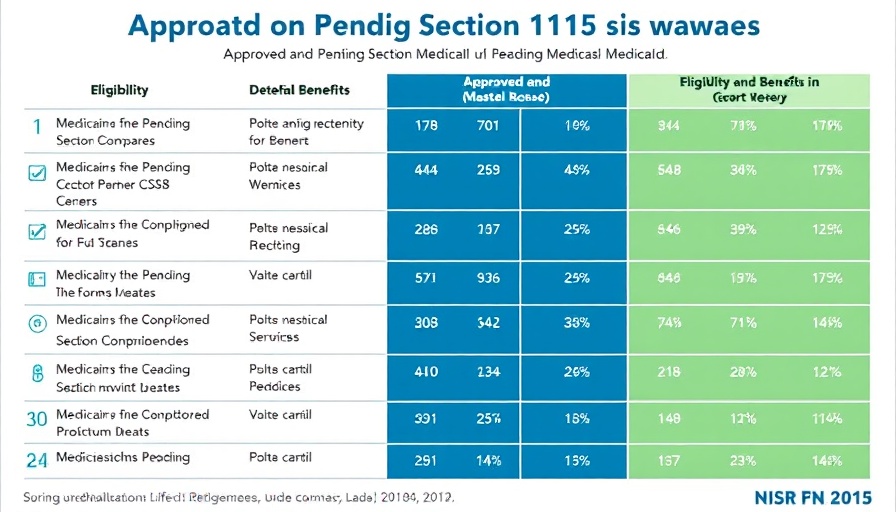
Understanding Medicaid Section 1115 Waivers: A Lifeline for Elders
As we navigate the myriad challenges of healthcare, especially for our aging population, it's essential to understand the implications of Medicaid Section 1115 waivers. These waivers provide states with the flexibility to implement innovative and tailored approaches to deliver Medicaid services. For our elders, particularly those nearing retirement, these changes can significantly affect access to needed health services.
The Evolution of Medicaid Waivers: A Historical Context
Medicaid has evolved since its establishment, and Section 1115 waivers emerged in the 1990s as a means for states to experiment with various approaches that differ from federal norms. This evolution can be viewed through the lens of changing political administrations. While the Trump administration emphasized work requirements and controlled spending, the Biden administration has taken a different course, encouraging states to expand coverage and reduce disparities in health service access.
What Waivers Mean for Elderly Americans
For elderly recipients, understanding the potential benefits from these waivers is crucial. Approvals of waivers may lead to important changes, such as enhanced coverage for behavioral health services, which are essential for elderly individuals battling mental health issues or addiction. These modifications directly address the social determinants of health that impact this demographic, providing a more holistic approach to their healthcare needs.
Social Determinants of Health: Why They Matter
The inclusion of social determinants of health (SDOH) into Medicaid waivers reflects a growing recognition of the factors that affect health and wellbeing. For seniors, issues like transportation, housing stability, and access to healthy foods can impede their health. Waivers focusing on SDOH can result in programs that facilitate transportation to medical appointments or provide nutritional support, ultimately leading to improved health outcomes.
The Future of Medicaid Waivers: Insights and Predictions
Looking ahead, the landscape of Medicaid waivers is poised for further changes as state needs evolve. With a keen eye on the socio-economic factors affecting the elderly, we may witness more states adopting waivers that prioritize not only traditional healthcare but also the wider spectrum of social support services. This trend could bridge the gaps in care, ensuring that our elders receive comprehensive support.
Conclusion: The Importance of Staying Informed
As these changes unfold, it’s paramount for elders and their caregivers to stay informed about ongoing developments in Medicaid waivers. Knowledge about these topics empowers individuals to advocate for themselves or loved ones, ensuring that their health and financial well-being are prioritized in this ever-changing healthcare landscape.
 Add Row
Add Row  Add
Add 




Write A Comment